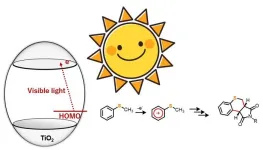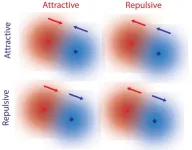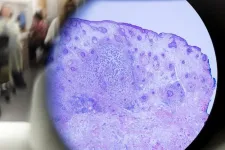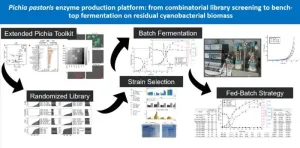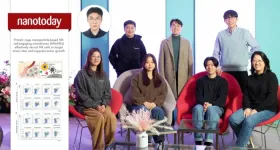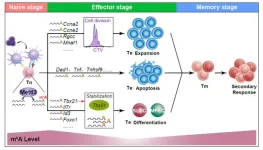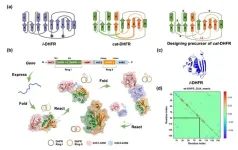(Press-News.org)
Heterocyclic compounds are organic molecules with a ring structure comprising at least two or more elements. In most cases, these rings are composed of carbon atoms along with one or more other elements such as nitrogen, oxygen, or sulfur. They are highly sought-after as raw materials in the chemical and pharmaceutical industry, owing to their versatility and excellent physiological activities. While several methods are available for synthesizing these compounds, most of them involve high temperature and pressure conditions, or the use of precious metal catalysts, adding to the economic and environmental cost of producing heterocyclic organic compounds.
Now, however, a team of researchers from Japan and Bangladesh have proposed a simple yet effective method for overcoming these challenges. Their study was recently published in the journal Advanced Synthesis and Catalysis on 15 November 2023. Using the proposed strategy, the team demonstrated the synthesis of 20 sulfur-containing heterocyclic compounds in the presence of photocatalyst titanium dioxide (TiO2) and visible light. The study was led by Professor Yutaka Hitomi from the Department of Applied Chemistry, Graduate School of Science and Engineering, Doshisha University, and co-authored by a Ph.D. candidate Pijush Kanti Roy from Doshisha University, Associate Professor Sayuri Okunaka from Tokyo City University, and Dr. Hiromasa Tokudome from Research Institute, TOTO Ltd.
TiO2 as a photocatalyst for driving organic reactions has captured the attention of synthetic chemists for a while now. However, many such processes require ultraviolet light to trigger the reaction. In this study, however, the research team found that under anaerobic conditions, sulfur-containing organic compounds like thioanisole derivatives, when hit with blue light, reacted with maleimide derivatives to form dual carbon–carbon bonds, yielding a new heterocyclic organic compound. “We observed that while ultraviolet light generates highly oxidative holes, our approach allows for the selective one-electron oxidation of the substrate molecules using visible light. This approach can thus be employed in various organic chemical reactions,” explains Prof. Hitomi.
The researchers chose five 4-substituted thioanisoles and four N-substituted maleimides for the annulation or ring formation reactions. The team irradiated the starting material with blue light (wavelength > 420 nm) but observed no reaction. However, introducing TiO2 into the reaction system led to the synthesis of 20 different thiochromenopyrroledione derivatives with moderate-to-high yield. They found that within 12 hours of exposure to blue light, the reaction between thioanisole and N-benzylmaleimide led to the formation of a thiochromenopyrroledione derivative with 43% yield, which was close to the theoretical maximum yield of 50%.
The research team also observed substituent effect in the reactions to understand the corresponding mechanistic aspects. From the results, they postulated that the reaction proceeds through charge transfer from thioanisole to the conduction band of TiO2. Furthermore, they suggested that irradiation with blue light triggered one-electron oxidation of thioanisole, which further initiated the generation of α-thioalkyl radicals through deprotonation.
In summary, this new and refined approach demonstrates the potential of TiO2 for visible light photocatalysis for organic synthesis. It also provided crucial insights into the chemistry of complex heterocyclic compound synthesis. Going ahead, this approach can open up new possibilities for transitioning from current resource-intensive industrial chemical processes to a more energy-efficient system.
Highlighting the significance and implications of this study, Prof. Hitomi says, “What drove our study was the desire to aid in the development of a sustainable chemical industry, and our findings appear to be a positive step in this direction.” Adding further, he says, “We believe that the widespread adoption of this visible light-driven technology could assist in accessible and affordable synthesis of pharmaceuticals, with its profound impacts on the health and well-being of millions of people worldwide.” Thanks to the efforts of Prof. Hitomi and his team, their study has opened up new avenues in the field of organic synthesis, with the potential to revolutionize multiple chemical industries.
About Professor Yutaka Hitomi from Doshisha University, Japan
Yutaka Hitomi is a Professor at the Department of Applied Chemistry, Graduate School of Science and Engineering, Doshisha University, Japan. Prof. Hitomi received his Master’s and Doctorate in Engineering from the Kyoto University, Japan. In 2016, he received the Nagase Research Promotion Award for his contributions to nanotechnology, biochemistry, and synthetic chemistry. The current research areas of Prof. Hitomi and his team include oxidation reactions, bioinorganic, catalytic, and coordination chemistry. He has published 95 publications so far, which have received more than 2,300 citations.
Funding information
This work was supported by the PRESTO Grant Number JPMJPR17S8 (YH) from Japan Science and Technology (JST) and JSPS KAKENHI Grant Number JP22K05360 (YH).
Media contact:
Organization for Research Initiatives & Development
Doshisha University
Kyotanabe, Kyoto 610-0394, JAPAN
Email ID: jt-ura@mail.doshisha.ac.jp
END
A new study published in Addiction has found that cytisine, a low-cost, generic stop-smoking aid that has been used in eastern Europe since the 1960s, increases the chances of successful smoking cessation by more than two-fold compared with placebo and may be more effective than nicotine replacement therapy. It has a benign safety profile, with no evidence of serious safety concerns. Sounds perfect for your New Year resolution, doesn’t it? But there’s a catch: Cytisine is not licensed or marketed in most countries outside of central and eastern Europe, ...
Travel deep enough below Earth’s surface or inside the center of the Sun, and matter changes on an atomic level.
The mounting pressure within stars and planets can cause metals to become nonconducting insulators. Sodium has been shown to transform from a shiny, gray-colored metal into a transparent, glass-like insulator when squeezed hard enough.
Now, a University at Buffalo-led study has revealed the chemical bonding behind this particular high-pressure phenomenon.
While it’s been theorized that high pressure essentially squeezes sodium’s electrons out into the spaces between atoms, researchers’ quantum chemical ...
WASHINGTON—The Endocrine Society, the world’s oldest and largest professional medical society devoted to the study and treatment of hormone-related conditions, applauds Governor Mike Dewine’s veto of a proposed Ohio law that would have banned gender-affirming care for minors. The bill he vetoed contradicts mainstream medical practice and scientific evidence and would have taken medical decision-making out of the hands of families and their physicians and instead relied upon government officials.
More ...
Researchers from the University of Maine and Penn State discovered that molecules experience non-reciprocal interactions without external forces.
Fundamental forces such as gravity and electromagnetism are reciprocal, where two objects are attracted to each other or are repelled by each other. In our everyday experience, however, interactions don’t seem to follow this reciprocal law. For example, a predator is attracted to prey, but the prey tends to flee from the predator. Such non-reciprocal interactions are essential for complex behavior associated with living organisms. ...
New research from Memorial Sloan Kettering Cancer Center (MSK) developed CAR T cells that target two acute myeloid leukemia-specific antigens; shed new light on a genetic element called LINE-1, opening the door to new treatments; identified a key regulator of blood stem cell fate; and found an immunotherapy technique using antibodies that target CD47 shows promise in mice.
CAR T Cells that target two antigens treat AML with minimal toxicity
Acute myeloid leukemia (AML) has so far resisted treatment with chimeric ...
The demand for industrial enzymes is continually rising, driven by the growing need to shift towards more sustainable industrial processes. Our research outlines a novel approach in enzyme production, harnessing the untapped potential of cyanobacterial biomass within the P. pastoris platform. Group Leader, Dr. Schieder, highlights the nature of the study, stating, "Our work reveals the potential of cyanobacterial biorefineries to support enzyme production."
This achievement stems from an extensive multi-field approach. We characterized and expanded a combinatorial library, streamlining P. pastoris engineering for enhanced efficiency. ...
A groundbreaking study led by Professor Sebyung Kang and Professor Sung Ho Park in the Department of Biological Sciences at UNIST has unveiled a remarkable breakthrough in cancer treatment. The research team has successfully developed unprecedented “NK cell-engaging nanodrones” capable of selectively targeting and eliminating cancer cells, offering a potential solution for intractable types of cancers.
The innate lymphoid cells known as natural killer (NK) cells play a vital role in the body’s immune response against cancer. Numerous efforts have been made to harness the power of NK cells to develop effective cancer therapies. ...
This study is led by Dr. Shuyang Yu (College of Biological Sciences, China Agricultural University), Dr. Jingyu Xu (The Collaborative Innovation Center of Tissue Damage Repair and Regeneration Medicine of Zunyi Medical University) and Dr. Xuguang Du (College of Biological Sciences, China Agricultural University) and illustrated the key role of Mettl3 in CD8 T cell response during acute infection model.
CD8 T cells (also known as cytotoxic T lymphocytes) are a key component of the adaptive immune system. Once ...
This study is led by Prof. Wen-Bin Zhang (College of Chemistry and Molecular Engineering, Peking University & Beijing Academy of Artificial Intelligence) and Dr. Jing Fang (College of Chemistry and Molecular Engineering, Peking University). A single-domain protein catenane refers to two mechanically interlocked polypeptide rings that fold synergistically into a compact and integrated structure, which is extremely rare in nature. This design was achieved by rewiring the connectivity between secondary motifs to introduce artificial entanglement, and synthesis was readily accomplished through a series of programmed streamlined ...
This study is led by Prof. Ping Zhang, Dr. Yiming Liu, Yile Song, and Jiaxiang Zhang (State Key Laboratory of Networking and Switching Technology, Beijing University of Posts and Telecommunications). The article summarizes the advances made in semantic information and semantic communications. It also deeply discusses the main challenges, key issues, and potential research directions in the development of modern semantic communication, aiming to prompt further scientific and industrial advances in semantic communications.
The development of information ...
